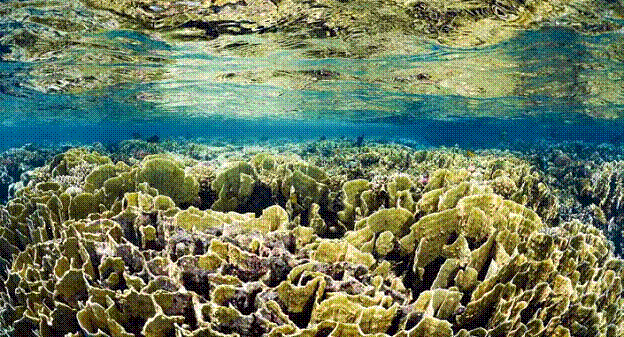(By FGR Bureau)
The fifth edition of the UNEP’s Global Environmental Outlook (GEO-5), was launched almost simultaneously in all regions on the eve of the Rio+20 Summit on 6 June 2012. The global launch took place in Rio de Janiero, Brazil and regional launch events took place in Nairobi, Addis Ababa, New Delhi, Beijing, Washington DC, New York, Abu Dhabi, Beirut, Geneva and Brussels. The launch of GEO-5 for Asia-Pacific region took place on 6 June 2012 at the United Nations Information Centre for India and Bhutan in New Delhi, India.
UNEP’s flagship Global Environment Outlook (GEO) report series keeps the state, trends and outlook of the global environment under review. GEO-5, the fifth in the series, also reviews the progress made in meeting internationally agreed goals, analyses successful policy options that have the potential for speeding up their realization, and highlights actions that both countries and the global community can take towards sustainable development.
The purpose of this regional GEO-5 launch is to highlight the significant findings of GEO-5 and to present key recommendations that address the major issues, including a focus on meeting internationally agreed goals and options for sustainable development. These findings are particularly timely and relevant in the lead-up to the UN Conference on Sustainable Development (Rio+20) in June 2012.
UNEP’s Global Environment Outlook (GEO) reports provide the international community with the state and trends of the environment. The fifth report in the series, GEO-5, also includes a new focus -measuring progress and gaps in meeting internationally agreed goals.
Internationally agreed environmental goals and objectives are drawn from international treaties and non-legally binding instruments. Goals are negotiated and agreed to by the international community in order to achieve an intended purpose – development that meets the needs of the current generation without compromising those of future generations. They provide overarching visions for sustainable development – one in which economic, social and environmental considerations are addressed together.
GEO-5 assessed progress towards key goals in the areas of Water, Land, Biodiversity, Atmosphere, Chemicals and Wastes. A summary of the GEO-5 assessment of progress towards a number of environmental goals will be briefly presented. GEO-5 concludes that lack of progress in meeting goals is partly due to the lack of specific, measurable targets and data. Few international environmental goals incorporate such targets. Those that do include: the Millennium Development Goal 7 targets to reduce by half the proportion of people without sustainable access to safe drinking water and basic sanitation;
the Aichi Biodiversity Target 11, to conserve by 2020 at least 17 per cent of terrestrial and inland water, and 10 per cent of coastal and marine areas; the complete phase-out of certain chemicals, such as ozone-depleting substances (under the Montreal Protocol), the use of lead in gasoline, and persistent organic pollutants (POPs) listed under Annex I of the Stockholm Convention.
GEO-5 also found some other limitations that impede progress towards realization of goals. These include: the lack of reliable data on issues such as freshwater pollution, groundwater depletion, land degradation and chemicals and waste; and the lack of comparable data to determine global trends or compare the situation in different countries.
GEO-5 however also presents successful policies that countries can adapt and implement in order to speed-up achievement of internationally agreed goals. GEO-5’s regional assessments have identified policy responses/instruments based on best practice that have been successfully adopted in one or more regions. Positive responses at all levels of society can generate incremental, structural and transformational change. The substantive involvement of civil society, the private sector and other relevant actors in policy-making processes is critical.
Delivering results requires a combination of technology, investment, governance and management measures, together with sustainable consumption and production patterns. A low carbon and resource efficient green economy with adequate support for the development of environmental innovation, offers great environmental and economic opportunities for the preservation of the environment, the creation of new jobs, lowering production costs and the strengthening of competitiveness. GEO-5 says that new measures will only succeed if accompanied by a reversal or redirection of policies that have generated unsustainable outcomes.
The GEO-5 has assessed 90 of the most-important environmental goals and objectives and found that significant progress had only been made in four. These are eliminating the production and use of substances that deplete the ozone layer, removal of lead from fuel, increasing access to improved water supplies and boosting research to reduce pollution of the marine environment. Some progress was shown in 40 goals, including the expansion of protected areas such as National Parks and efforts to reduce deforestation. Little or no progress was detected for 24 – including climate change, fish stocks, and desertification and drought. Further deterioration was posted for eight goals including the state of the world’s coral reefs while no assessment was made of 14 other goals due to a lack of data.
The report cautions that if humanity does not urgently change its ways, several critical thresholds may be exceeded, beyond which abrupt and generally irreversible changes to the life-support functions of the planet could occur.
“If current trends continue, if current patterns of production and consumption of natural resources prevail and cannot be reversed and ‘decoupled’, then governments will preside over unprecedented levels of damage and degradation,” said UN Under-Secretary General and UNEP Executive Director Achim Steiner.
But it’s not all bad news. The report says meeting an ambitious set of sustainability targets by the middle of the century is possible if current policies and strategies are changed and strengthened, and gives many examples of successful policy initiatives, including public investment, green accounting, sustainable trade, the establishment of new markets, technological innovation and capacity building.
GEO-5 also points out that where international treaties and agreements have tackled goals with specific, measurable targets—such as the bans on ozone-depleting substances and lead in petrol—they have demonstrated considerable success. For this reason, GEO-5 calls for more specific targets, with quantifiable results, across a broader range of environmental challenges.
“GEO-5 reminds world leaders and nations meeting at Rio+20 why a decisive and defining transition towards a low-carbon, resource-efficient, job-generating Green Economy is urgently needed,” said Mr. Steiner. “The scientific evidence, built over decades, is overwhelming and leaves little room for doubt.”
“The moment has come to put away the paralysis of indecision, acknowledge the facts and face up to the common humanity that unites all peoples,” he added. “Rio+20 is a moment to turn sustainable development from aspiration and patchy implementation into a genuine path to progress and prosperity for this and the next generations to come.”
The report also calls for a greater focus on policies that target the drivers of environmental change – such as population growth and urbanization, unsustainable consumption patterns, fossil fuel-based energy consumption and transport, and globalization.
In particular, globalization has made it possible for trends in drivers to generate intense pressures in concentrated parts of the world very quickly, as in the case of increased demand for bio fuels leading to land clearance and conversion.
Although reducing the drivers of environmental change directly may appear politically difficult, it is possible to accomplish significant indirect benefits by targeting more expedient objectives, such as international goals on human well-being, the report says.
State of the Environment
Scientific evidence shows that Earth systems are being pushed towards their biophysical limits, with evidence that these limits are close and have in some cases been exceeded.
Atmosphere
Of the nine internationally agreed atmospheric goals reviewed, significant progress has been made in eliminating substances that deplete the ozone layer and the phase-out of lead in gasoline, but there has been little or no progress on serious issues such as indoor air pollution and climate change.
Ozone
The world has nearly eliminated the production and use of ozone depleting substances, under the Montreal Protocol.
- It is estimated that implementation of the Protocol will result, in the United States alone, in 22 million fewer cases of cataracts in people born between 1985 and 2100, and 6.3 million fewer skin cancer deaths by mid-century.
- While further expansion of the Antarctic ‘ozone hole’ has been halted, full recovery is not expected until mid-century or later.
- One group of ozone replacement chemicals – hydro fluro carbons (HFCs) – still needs to be phased out due to many having a high global warming potential.
Climate Change
Under current models, greenhouse gas emissions could double over the next 50 years, leading to rise in global temperature of 3°C or more by the end of the century. Four independent analyses show that 2000-2009 was the warmest decade on record and in 2010, the rate of emissions from fossil fuel burning and cement production was the highest ever recorded. The annual economic damage from climate change is estimated at 1-2 per cent of world GDP by 2100, if temperatures increase by 2.5⁰C.
Air Pollution
Air pollution is among the main causes of premature deaths and health problems, especially in children.
- Indoor air pollution from particulate matter is responsible for nearly 2 million premature deaths annually – including 900,000 deaths in children under the age of five.
- Out-door particulate matter may be responsible for around 3.7 million deaths annually.
- Ground-level ozone is responsible for 700,000 respiratory deaths, over 75 per cent of which occur in Asia.
- Global economic losses due to reduced agricultural yields caused by air pollution are estimated at US $14-26 billion annually.
Biodiversity
The world failed to reach the Millennium Development Goal (MDG) target of a significant reduction in the rate of biodiversity loss by 2010.
- Around 20 per cent of vertebrate species are under threat.
- The extinction risk is increasing faster for corals than for any other group of living organisms, with the condition of coral reefs declining by 38 per cent since 1980. Rapid contraction is projected by 2050.
- With more than 30 per cent of the Earth’s land surface used for agricultural production, some natural habitats have been shrinking by more than 20 per cent since the 1980s.
However, there has been some progress in terms of policy responses, such as increasing the coverage of protected areas and sharing access and benefits of genetic resources.
Water
Of the 30 environmental goals examined in relation to water, only one goal – that of increasing access to clean drinking water – shows significant progress. But less progress has been made in rural areas, especially in Africa and the Pacific.
Despite some improvements, water quality remains the largest cause of human health problems worldwide. At the same time, climate change and further population growth are likely to result in even greater water shortages in many regions.
- Water quality in at least parts of most major river systems still fails to meet World Health Organization (WHO) standards.
- More than 600 million people are expected to lack access to safe drinking water by 2015, while more than 2.5 billion people will lack access to basic sanitation.
- As water scarcity increases, some regions will be forced to rely more on energy- intensive desalination technologies.
- By 2030, an estimated US $9-11 billion will be spent annually on additional infrastructure to provide sufficient quantities of water, especially in developing countries.
- Curbing water pollution could result in health benefits of more than US $100 million in large OECD economies alone.
- Nitrate concentrations are projected to increase due to water pollution from fertilizers and inadequate sanitation, resulting in serious threats to human health and aquatic life.
Although freshwater pollution seems to be on the increase, proper monitoring has declined in many regions.
Ground Water Depletion
Further deterioration of groundwater supplies has been recorded since 2000, while global water withdrawals have tripled over the past 50 years. Agriculture accounts for 92 per cent of the global water footprint and many global agricultural centres are particularly dependent on groundwater, including northwest India, northeast Pakistan, northeast China and western United States.
Integrated Water Management
Integrated water management and monitoring tools need to be developed and strengthened if the world is to better manage current and future water challenges. At present, about 158 of the 263 international freshwater basins still lack cooperative management frameworks. Other obstacles to better water management include: Insufficient data, the absence of comprehensive monitoring systems and water security indicators to track trends over time.
Extreme Events
GEO-5 emphasizes the need to step up efforts to prevent and mitigate the impact of extreme events, including climate change-induced disasters. River channelization, floodplain loss, urbanization and changing land-use are important environmental factors increasing the impacts of floods and drought.
- The number of flood and drought disasters rose by 230 per cent and 38 per cent respectively between the 1980s and 2000s, while the number of people exposed to floods rose by 114 per cent.
- The cost of coastal adaptation to climate change is estimated to reach between US $26 billion and US $89 billion by the 2040s, depending on the magnitude of sea-level rise.
Land
Some progress has been made to ensure better access to food, although combating desertification and droughts has seen little or no progress. Competing demands for food, feed, fuel, fibre and raw materials are intensifying pressures on land, helping to drive deforestation. There has been some progress on deforestation at the global level: annual forest loss decreased from 16 million hectares in the 1990s to approximately 13 million hectares between 2000 and 2010. Africa and Latin America and the Caribbean together accounted for the loss of over seven million hectares annually between 2005 and 2010. Improved governance and capacity building are crucial to fulfilling the potential for more sustainable land management and systems.
Chemicals and Waste
There has been some progress is dealing with heavy metals, persistent organic pollutants and radioactive waste. However, more than 90 per cent of water and fish samples from aquatic environments are contaminated by pesticides. Pollution with persistent organic pollutants (POPs) is also widespread, in particular affecting remote areas such as the Arctic and Antarctic. Emerging issues requiring attention include accelerating the sound management of electronic and electrical waste (e-waste) and the challenges of endocrine-disrupting chemicals, plastics in the environment, open burning, and the manufacture and use of nano-materials.
Detailed summaries that present a full picture of GEO-5’s content per region are available separately, but below is an overview of key issues and examples of successful policies that, if scaled-up and accelerated, could assist in a transition to a Green Economy.
Africa, Asia and the Pacific and Latin America and the Caribbean share the common problems of population growth and increasing consumption, worsened by rapid urbanization in Africa and Asia and the Pacific, placing growing stress on dwindling natural resources. Climate change is an overarching problem.
However, examples of success – from a renewed understanding of the value of forests to ecosystems in Kenya, to the introduction of payments for ecosystem services in Vietnam to policies that have reduced deforestation rates in the Amazon – show progress is possible.
Europe and North America continue to operate at unsustainable levels of consumption, and North America in particular has seen limited growth in the renewable energy industry.
Yet policies to cut greenhouse gas emissions in Europe, such as congestion taxes, show change is achievable, as do policies in North America, such as improving the flexibility of grids to allow renewable sources more access and the implementation of carbon taxes in Quebec and British Colombia.
West Asia is facing worsening water scarcity, land degradation and sea level rise, but can point to water resources management in Yemen, Saudi Arabia and Bahrain and rangeland rehabilitation in Syria as policies that can be replicated.
Recommendations
GEO-5 outlines ways in which the race for development needs not be at the expense of the environment or the populations which rely upon it. Indeed, many of the projects that the publication analyses prove that development can be boosted through better understanding the value of natural resources. Above all, a redefinition of wealth that goes beyond Gross Domestic Product to a more sustainable metric could boost the quality of life and well-being of all communities, especially those in developing nations. The report makes the following specific recommendations:
- More reliable data are needed to make informed decisions about environmental resources and to measure progress towards meeting internationally agreed goals
- There is a need for clear long-term environment and development targets and for stronger accountability in international agreements
- Capacity development to support environmental information, especially in developing countries, needs to be stepped up significantly
- Changes need to be both short- and long-term, and to combine technology, investment and governance measures along with lifestyle modifications grounded in a mindset shift towards sustainability- and equity-based values
- Transformation requires a gradual but steadily accelerating transition process. Some successful policy innovation is already happening but need to be mainstreamed
- International cooperation is essential, since environmental problems do not follow national boundaries. Global responses can play a key role in setting goals, generating financial resources and facilitating the sharing of best practices
- Even though national and regional responses have shown success, a polycentric governance approach is needed to attain effective, efficient and equitable outcomes.
- Improving human well-being is dependent on the capacity of individuals, institutions, countries and the global community to respond to environmental change
- Rio+20 provide an opportunity to assess achievements and shortcomings, and stimulate transformative global responses.




